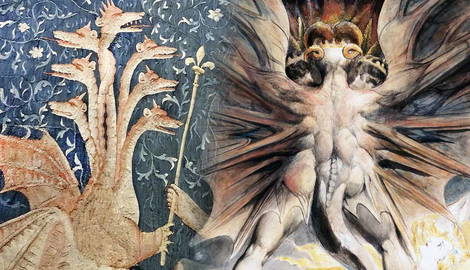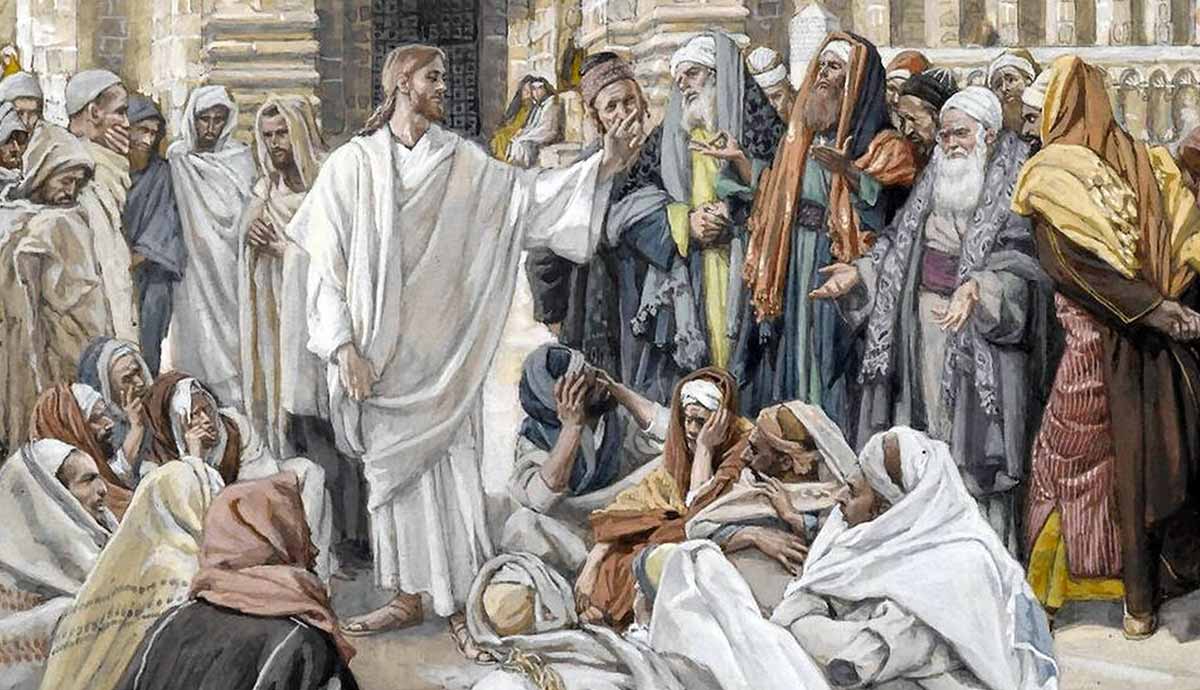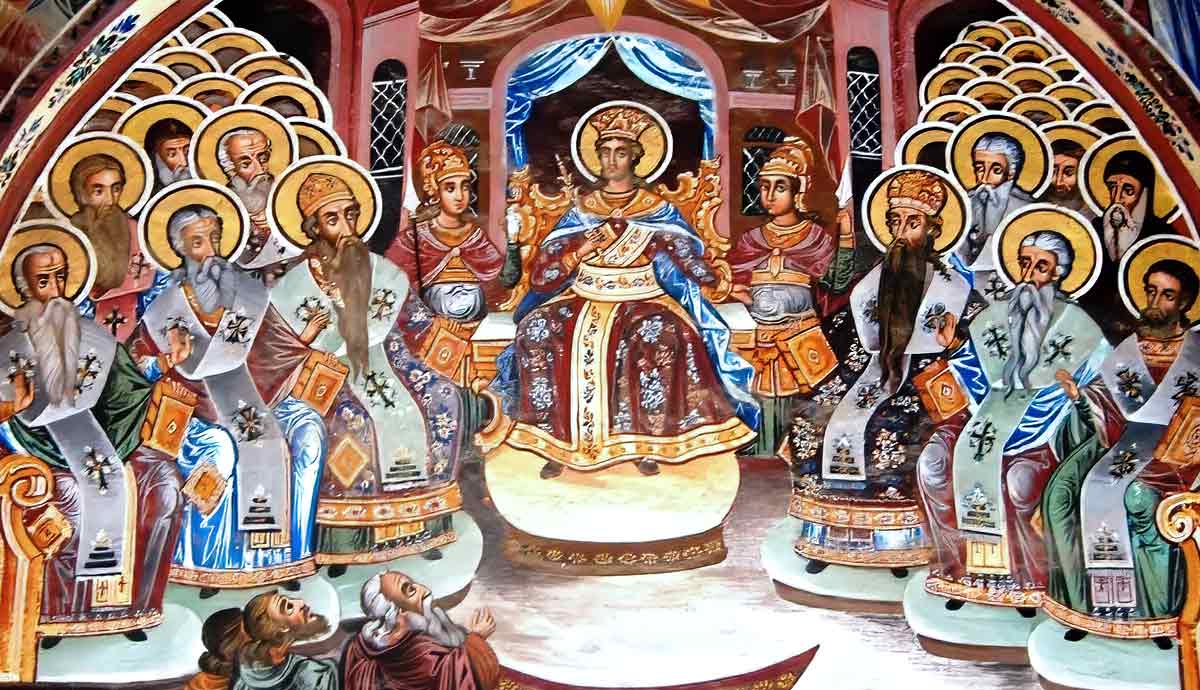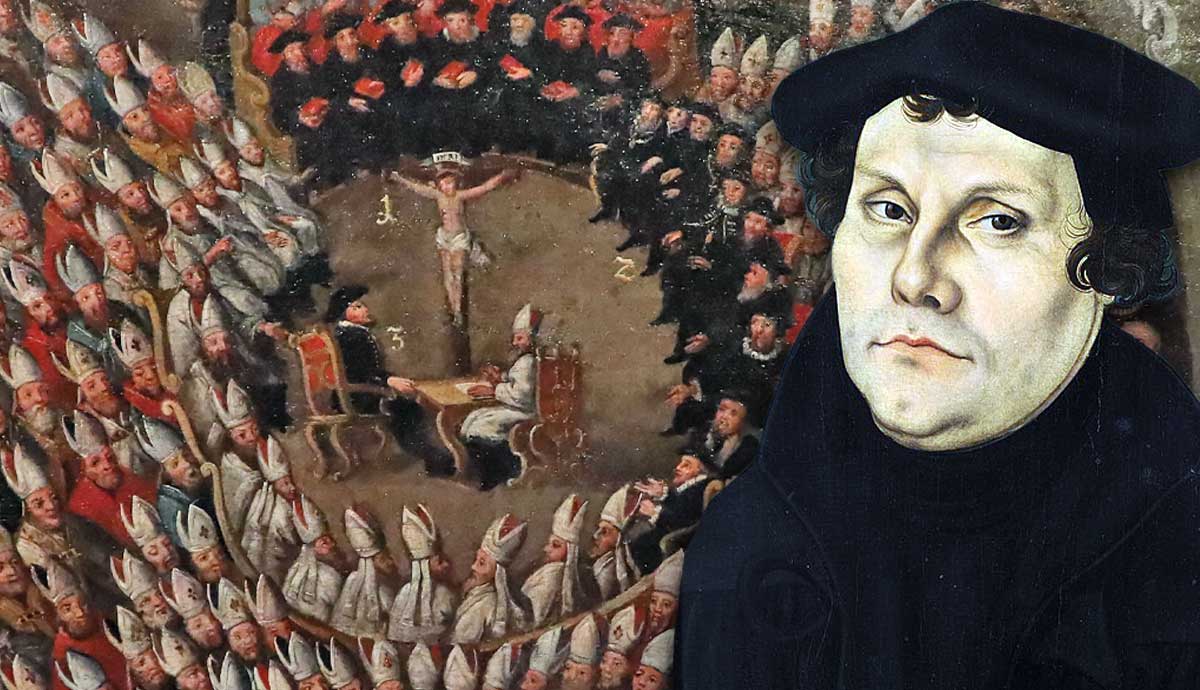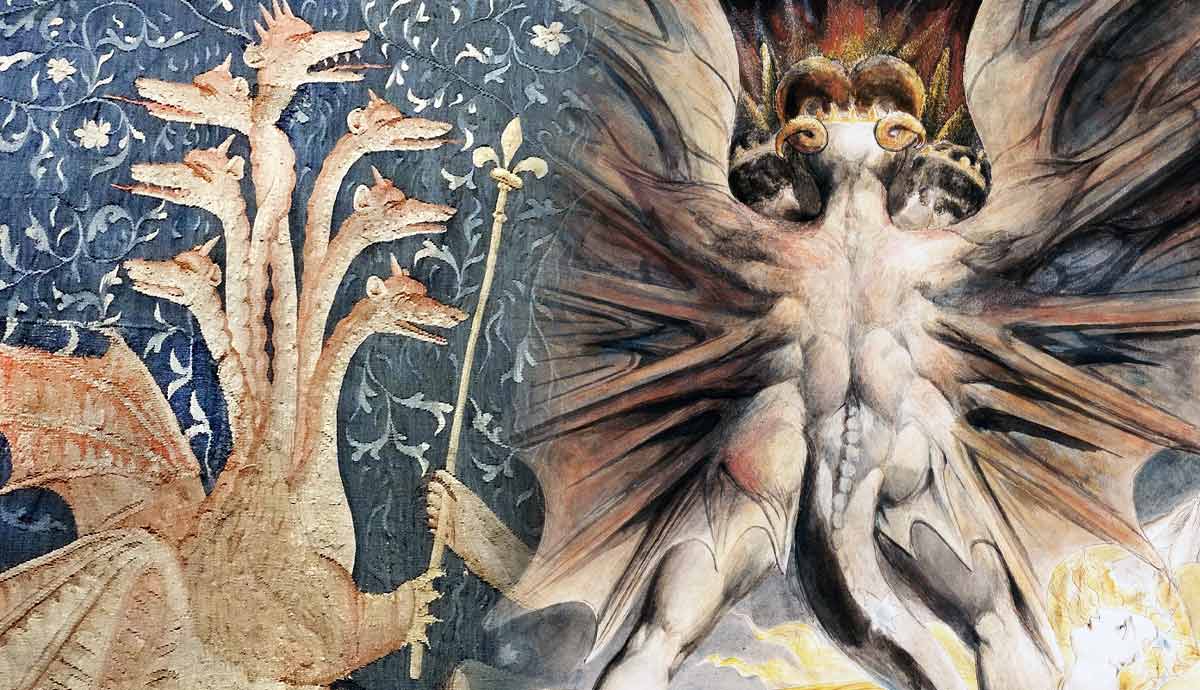
The dragon of Revelation is one of the symbols that needs no interpretation. The Bible provides the interpretation unequivocally. To fully understand the dragon’s influence, however, we must consider the immediate context of Revelation, the book’s relation to the totality of scripture, and the ancient Near Eastern mythology that influenced the Israelite authors. The connections between these sources contribute to a clearer understanding of why the author of Revelation used the dragon as a symbol. We start by considering the Biblical narrative of Revelation, the whole Bible, and the Near Eastern antecedents.
Narratives on the Dragon and Chaos Monsters
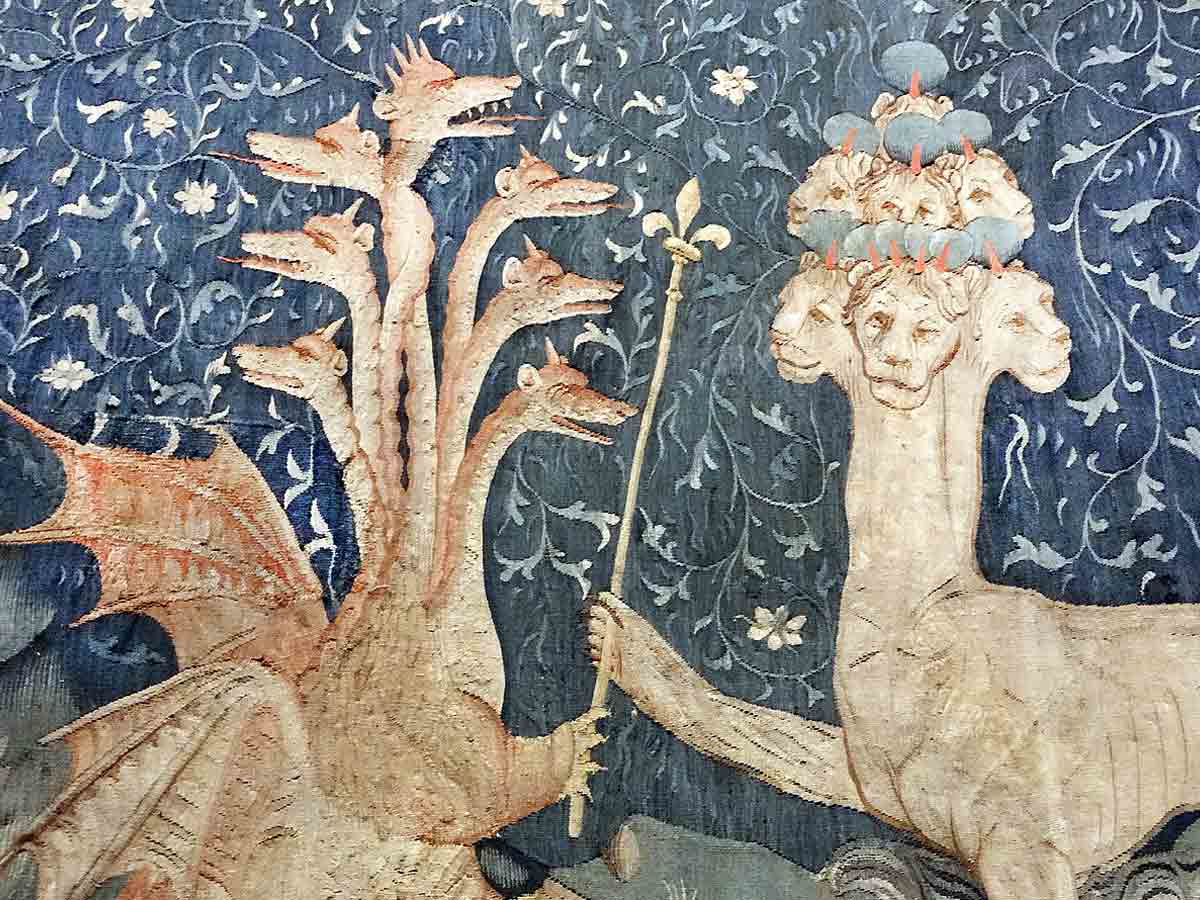
To understand the biblical narrative about the dragon, we need to familiarize ourselves with the biblical narratives on it and related creatures in the Bible and sources from the ancient Near East.
Revelation 12 introduces the reader to a seven-headed dragon with ten horns (verse 3). The dragon cast a third of the stars from heaven down to earth with its tail (verse 4). The framework of prophetic interpretation suggests that it did so by spreading falsehoods among the angels in Heaven since a tail represents false prophecy and stars sometimes symbolize angels (Isaiah 9:15, Job 38:7, Revelation 1:20).
The dragon and his angels then sparked a war in Heaven (Revelation 12:7). The Greek suggests this is not a conventional war but, rather, a war of words, a polemic. The dragon and his forces lose the battle and proceed to persecute the people of God, particularly those “who keep the commandments of God and hold to the testimony of Jesus.”
Significant in this chapter is how it identifies the dragon. Revelation 12:9 states: “And the great dragon was thrown down, that ancient serpent, who is called the devil and Satan, the deceiver of the whole world—he was thrown down to the earth, and his angels were thrown down with him.” The dragon is another iteration of the serpent of Genesis 3:1-15, who was Satan. Revelation 20:2 confirms this identification.
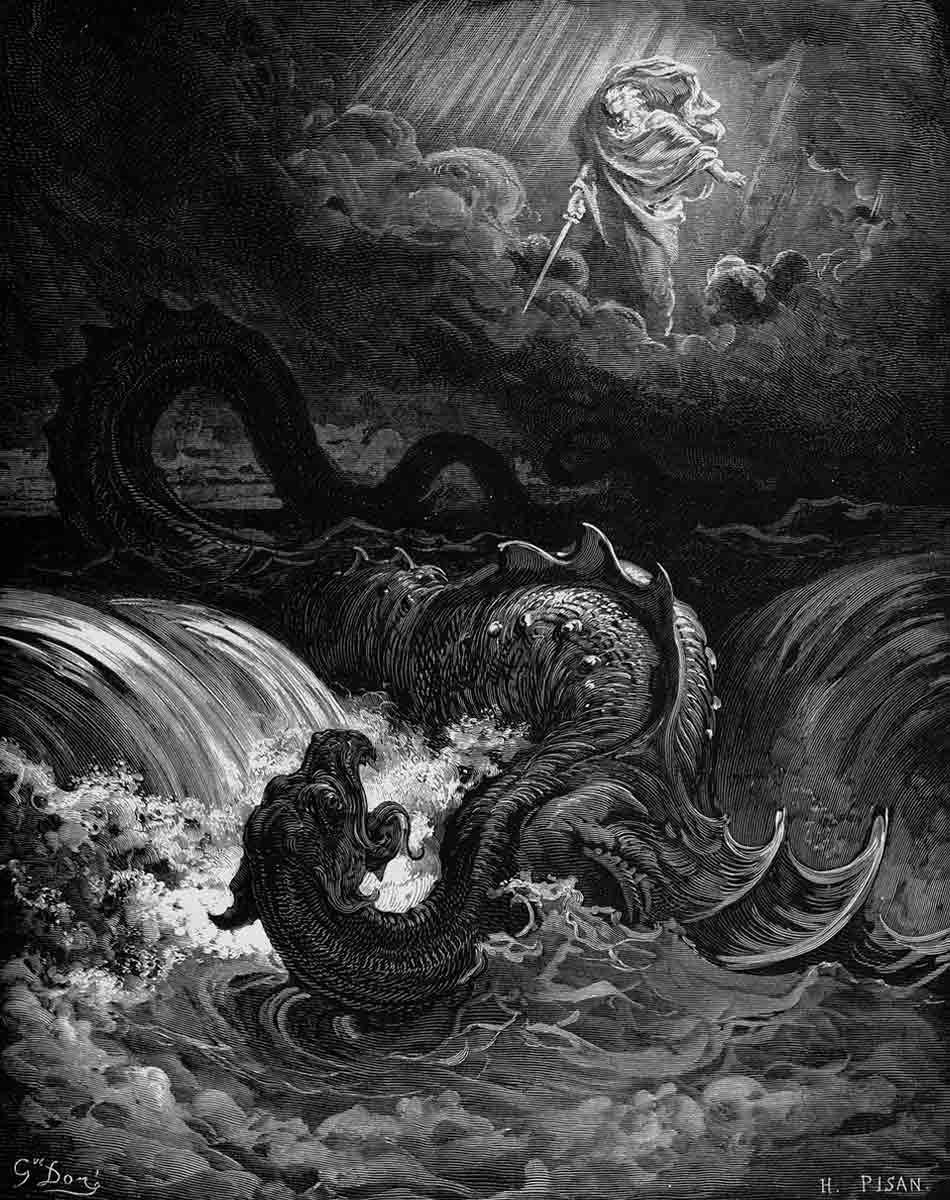
The beast that rose from the sea in Revelation 13:1 had attributes like the dragon, having seven heads and ten horns. The dragon gave the beast from the sea its authority, and obedience to the beast would constitute worship of the dragon. Later, the beast that rose from the earth and had the semblance of innocence and redemption would speak like the dragon, suggesting it drove the narratives of the dragon like the previous beast also did (Revelation 13:11).
Revelation 16:13-14 shows that the dragon’s tendency to promote falsehoods continues with the added potency of demonic spirits who do supernatural things that drive the cosmic battle between God and Satan to a conclusion. Finally, God restrains the dragon for a millennium, after which “the lake of fire and sulfur” becomes his final destination (Revelation 20:2-10).
Isaiah 27:1 connects the dragon with the iconic Leviathan, a monster associated with the seas. Some scholars suggest Leviathan in Job 41 is yet another depiction of Satan in creature form. In addition, Ezekiel 29:3 and 32:2 also associated the dragon with a watery environment. Some theologians suggest the waters represent “peoples and multitudes and nations and languages”; therefore, the activity of the dragon in the “waters” suggests Satan is at work among the people of the world, influencing their thoughts and actions (Revelation 17:15).
The Chaos Monster
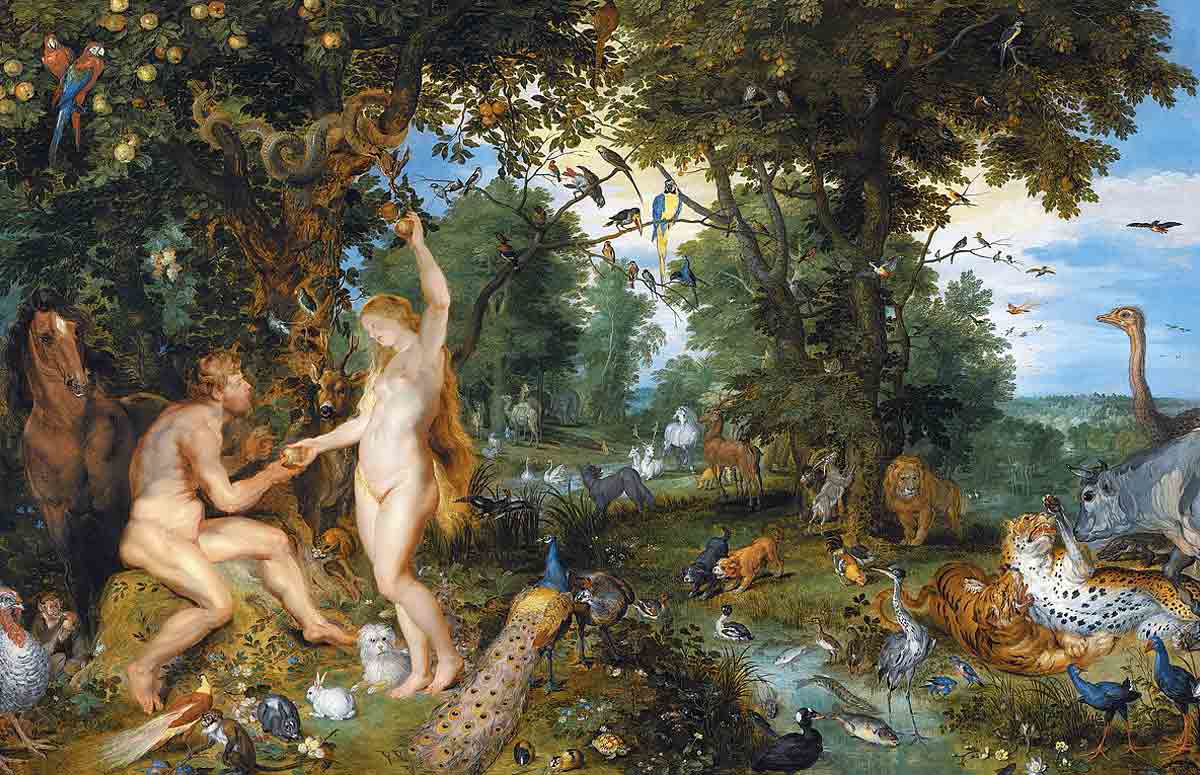
The biblical narrative draws from mythology and imagery well-known in the ancient Near East. In the Enuma Elish, a work compiled from various Babylonian creation narratives, Marduk slayed Tiamat, a dragon-like goddess who resided in the primordial sea. According to Canaanite religion, Baal defeated Yam, the sea monster. Ugaritic texts describe Lotan, a multi-headed creature like Leviathan, defeated by divine forces. The concept of order fighting and defeating chaos was common among ancient nations of the Levant and Mesopotamia.
Together, these three creatures represented that which attempts to destroy the cosmic order. The represented untamed natural forces spell danger and pose a threat to civilization and order. In general, the chaos these creatures caused in their respective mythologies resulted in cosmic, metaphysical, social, and environmental disorder. Yam challenged the political and divine order, resulting in war among the deities. Lotan threatened divine and earthly chaos, often by abusing natural forces to wreak havoc. Tiamat, as a representation of formless, undifferentiated water, wanted revenge for the death of her consort Apsu and to plunge the cosmos into chaos.
All three of these myths result in the victory of order over chaos. The villains are defeated, and in the case of Marduk and Tiamat, it resulted in the creation of Heaven and Earth from the severed body of the slain Tiamat. Many theologians have read into the creation story of Genesis 1 many elements from the Enuma Elish creation myth. Such an approach often results in drawing unjustified parallels and reading the text through glasses that skew what the text attempts to say.
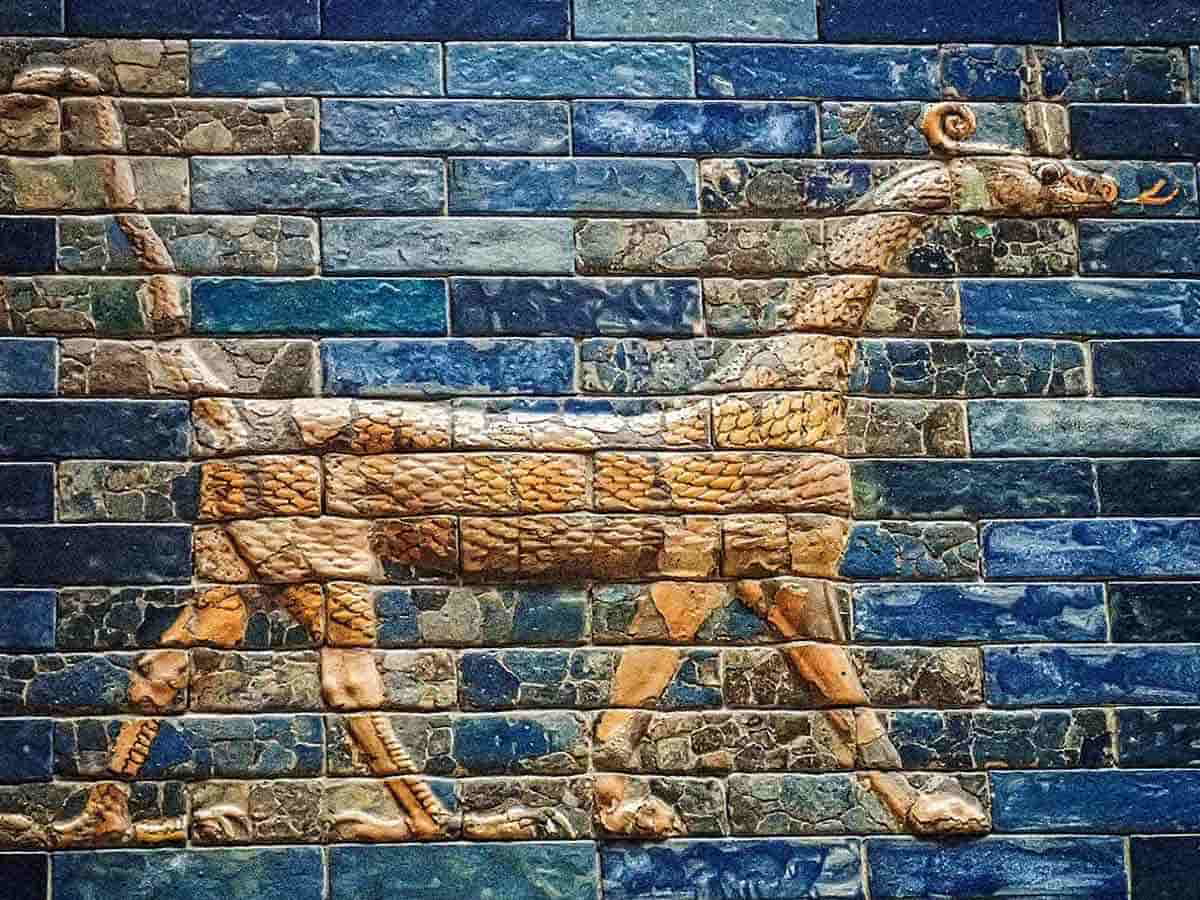
These myths describe the victory of order over chaos. Scholars have suggested that Israelite authors have used these existing narratives and adapted them to their monotheistic context. Tiamat, Yam, and Lotan in the ancient Near Eastern myths became the serpent, dragon, devil, or Satan of the biblical narrative. For this suggestion to be valid, the various permutations of the dragon must be the cause of chaos, which ends with its final defeat.
The Dragon as the Origin of Chaos
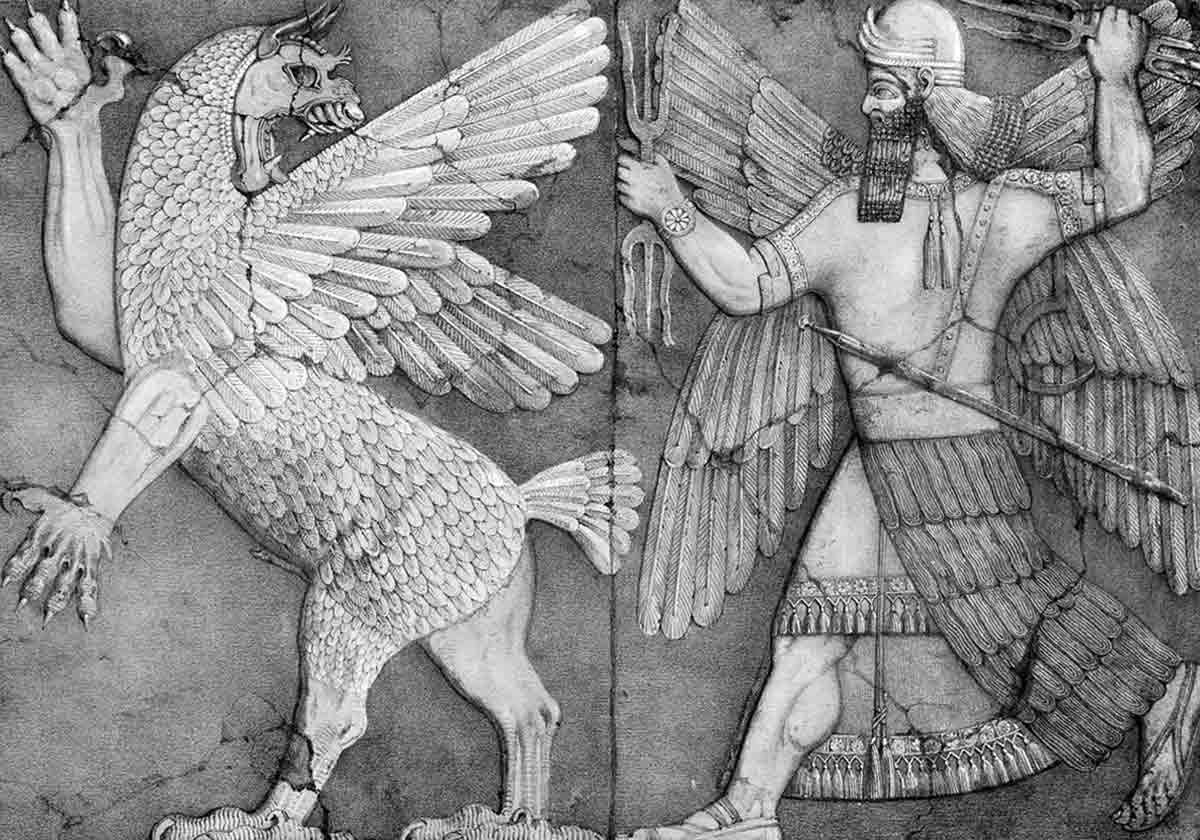
In reconstructing the timeline of biblical events, most theologians agree that the events described in the first part of Revelation 12:4 occurred before the fall of man. The false narratives of the dragon shattered the peace of Heaven and resulted in separation between the angels who remained true to God and those stars who fell. Later, these two factions engaged in verbal conflict in Heaven that solidified their divide when the dragon and his minions realized “there was no longer any place for them in heaven” (Revelation 12:8). They then sought to wreak havoc among the people of God on Earth.
In the biblical narrative, the serpent, another manifestation of the dragon, was the cause of disunity in Eden, resulting in the destruction of relationships and harmony that impacted all of creation. Adam and Eve hid from God, blamed others for their disobedience, and suffered the consequences of the Fall (Genesis 3:8,12-13, 16-19). The repercussions of this disunity and disharmony reverberated throughout the generations of humanity and all of creation. From the perspective of humankind, no restoration of the former order was possible. Genesis 3:15 promised a future redeemer who would conquer the author of chaos and restore the order of creation to its former glory.
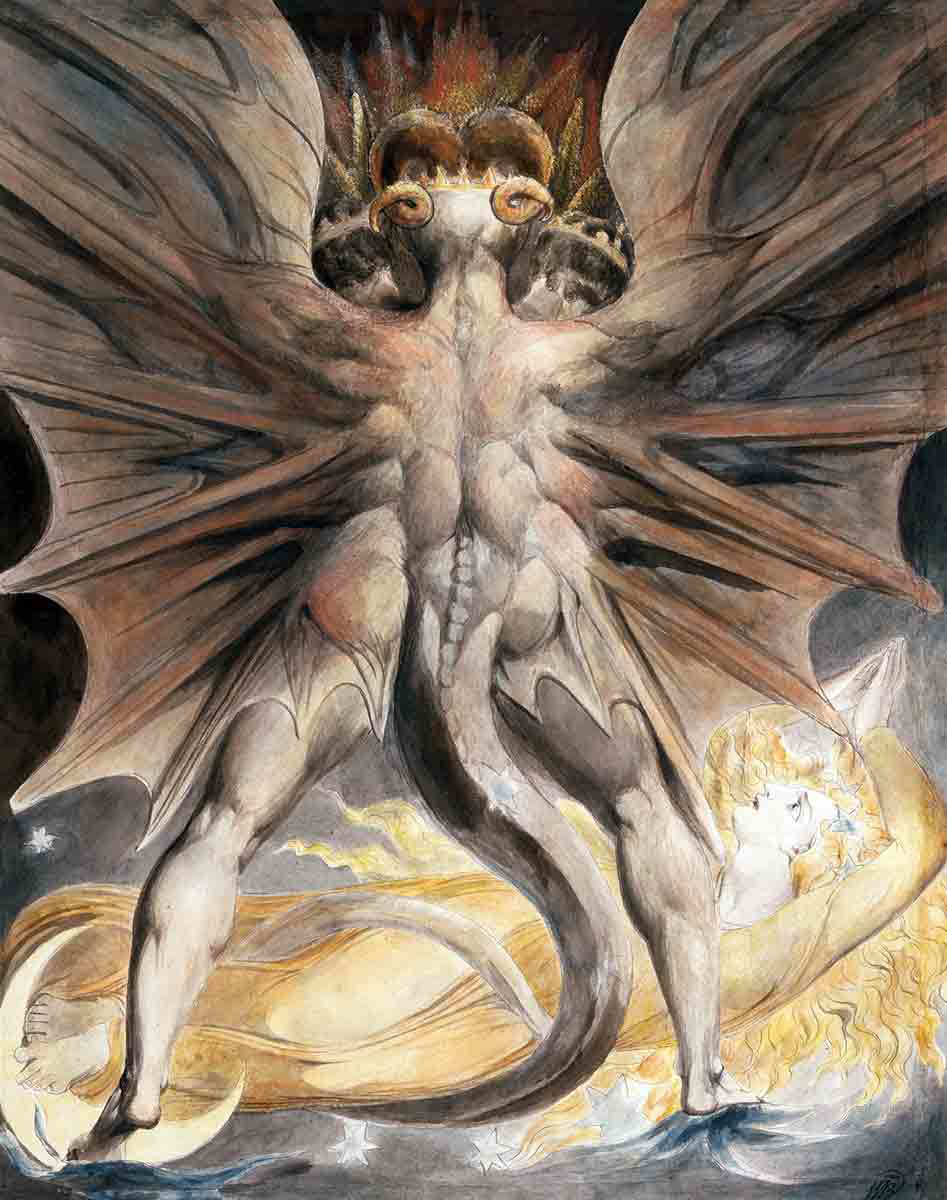
When the dragon attempted to kill the son of the woman, it was an attempt to destroy the Messiah, the only path to the restoration of order. This narrative correlates with the attempt by King Herod to kill the baby Jesus as recorded in Matthew 2.
The Bible presents the millennium as a time when the dragon is bound, which suggests a suspension of chaos (Revelation 20:2-3). Upon the release of Satan after the millennium, chaos ensues again (Revelation 20:7-9). As before, the deceptive nature of the dragon is evident. The conclusion of the battle between order and chaos comes when the dragon ends up in the lake of fire (Revelation 20:10). The subsequent two chapters of Revelation reveal the restoration of order, harmony, and relationship as they were before the author of chaos appeared on the scene.
The Dragon in the Bible: In Conclusion
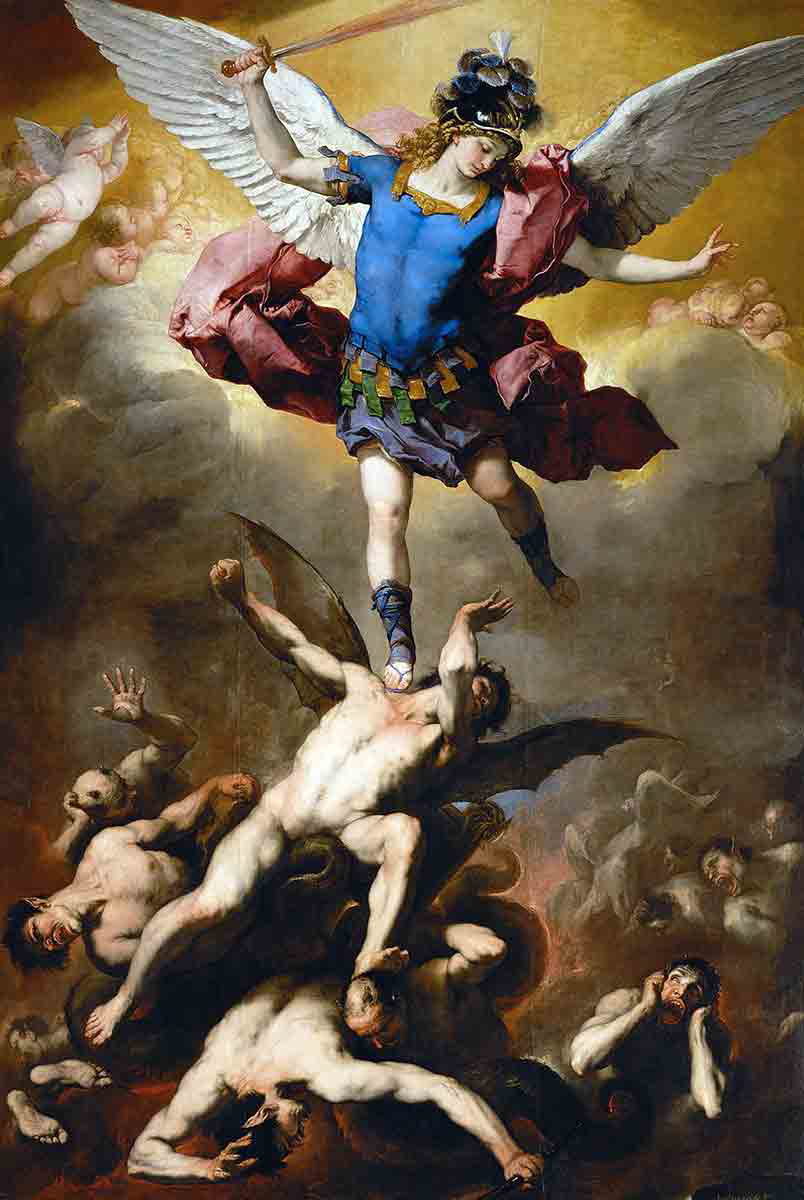
Revelation 12 presents a brief version of the battle between good and evil, or order and chaos, in a concise narrative that spans most of human history up to the events preceding the Second Coming. It describes the origin of disharmony in the heavenly sphere, sparked by the dragon and its false narratives, which caused the fall of a third of the angels. He appeared in Eden as a serpent, promoting narratives that resulted in chaos in the world of humankind. The dragon used human agents to do his bidding by killing the One sent to establish a pathway to order and restore the broken relationship between creation and the Creator.
The Bible presents the dragon in various forms as the agent of chaos in humanity, who attempts to prevent people from finding, following, or finishing the path towards order. The symbolism the Bible used to portray the father of chaos aligns with that of the myths of the ancient Near East.
The identification of the dragon as Satan is not open to interpretation. The narrative of Revelation states as much in chapter 12:9 and 20:2, and shows that the dragon, the devil, Satan, and the serpent are different ways the Bible refers to the same entity.
